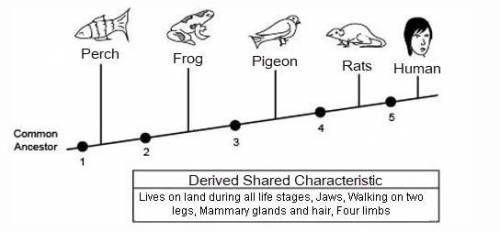
Biology, 05.04.2020 01:42 damianfrasieanu5387
HELP PLEASE
Look at the possible derived shared characteristics, shown in the text box. Think about where these should be placed along the branching tree diagram. Where in the branching tree would you most likely write jaws? Explain your answer.


Answers: 3


Other questions on the subject: Biology



Biology, 22.06.2019 03:50, FoxGirl1971
2. how does the miller-urey experiment fall short of demonstrating that life can arise from inorganic molecules? explain. a. it doesn't show a leap between a collection of amino acids and a single-celled organism. b. it recreates the conditions that existed at the earth's beginning, but no molecules form as a result. c. it doesn't provide evidence of the formation of amino acids. d. it doesn't show how multicellular organisms developed from unicellular organisms
Answers: 2

Biology, 22.06.2019 06:50, Shaylaharrison15
The kidney filters potentially toxic substances in the blood, and thus “clears” the blood of those substances. this clearance function is dependent upon and proportional to the diffusion gradient of the substance across filtering capillaries, i. e. if the concentration of the substance is doubled, twice as much will be cleared from each ml of blood that is filtered. suppose that the body produces a constant amount of a substance x per unit of time. the kidneys eliminate substance x at a rate directly proportional to the concentration of the substance and the volume of blood cleared each minute (c): elimination = c × [x], where [x] is the steady-state concentration of substance x. imagine an individual with an initial concentration of x equal to [x]0 who develops kidney disease. her baseline clearance c0 drops to one half of the original (½c0). what is the new steady state concentration of x? (for simplicity, assume that substance x is 100% filtered by the kidney).
Answers: 1
You know the right answer?
HELP PLEASE
Look at the possible derived shared characteristics, shown in the text box....
Look at the possible derived shared characteristics, shown in the text box....
Questions in other subjects:

Mathematics, 02.02.2020 01:42


Mathematics, 02.02.2020 01:42

Geography, 02.02.2020 01:42


Mathematics, 02.02.2020 01:42



Mathematics, 02.02.2020 01:42




